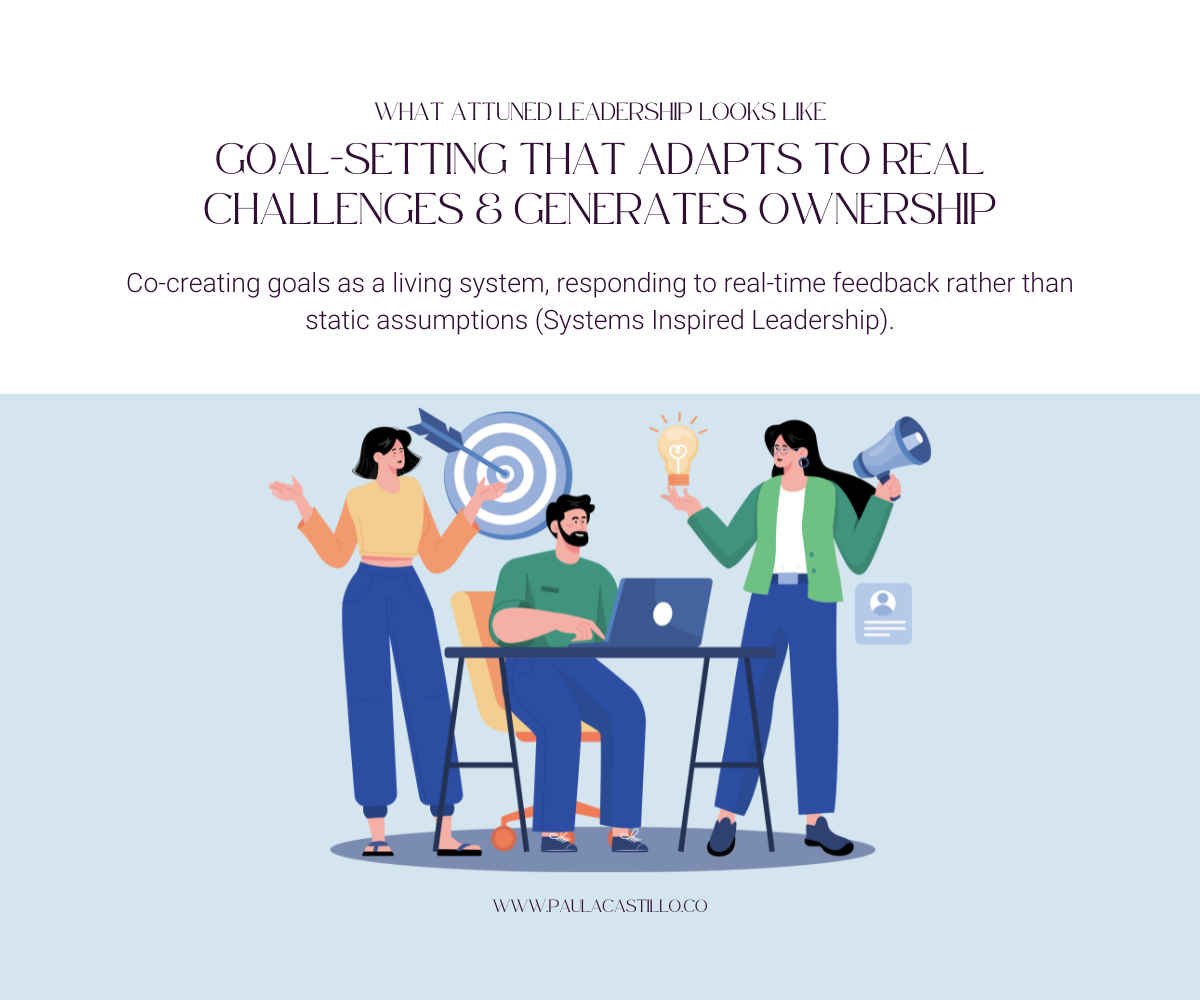The End of the Lone Leader: Why the Future of Leadership is Attunement
TL;DR: Why attuned Leadership is the Future
The era of lone leadership—where one person holds all the answers—is over. In today’s fast-paced, complex world, leaders must integrate systemic intelligence—like deep listening, relational intelligence, and presence—to make more informed and adaptive decisions. Unlike democratic or shared leadership, attuned leadership doesn’t mean diluting authority—it means enriching decision-making with attuned wisdom while maintaining decisiveness when needed. By creating coherence and fostering connection, leaders can navigate uncertainty with more grounded, resilient approaches.
The era of the lone leader with all the answers is over. Leadership today isn’t about having the “right” answers—it’s about sensing what is happening, interpreting complexity, and responding in real time. But in a world that moves faster than ever, where events slip through our fingers before we can fully grasp them, how do we lead effectively?
Could the key lie in something we do naturally as humans but often overlook—our ability to hold space, create coherence, and foster deep connection?
The Rise of Attuned Leadership and the Qualities That Define It
Lone leadership, where one person carries the burden of having all the answers, is simply not sustainable anymore. The world has become too complex and fast-paced for one individual to single-handedly interpret, decide, and act with certainty.
Attuned leadership doesn’t mean you can’t still be decisive or take charge when needed—it means that your decisions are informed by a deeper, more nuanced understanding of what’s happening in real time. By attuning to collective wisdom and fostering open communication, leaders can make smarter, more grounded choices without losing the ability to act decisively when it counts.
A note on sources: Attuned leadership and self-attunement are deeply studied and taught by Thomas Hübl and Amy Elizabeth Fox. Systems Intelligence is a concept I studied under Marita Fridjhon & Frank Uit de Weerd. Presencing—a blend of presence and sensing— is taught by Otto Sharmer. I’ve included additional sources below but would love to include more perspectives if you have of them!!






What Does This Look Like in Practice?
Rather than focusing on individual authority, attuned leadership thrives on participation, emergence, and adaptability. Here are a few examples of how it shows up:
Meetings that engage and deliver results
Priya Parker reminds us in her book, The Art of Gathering, that intentional design fosters deeper engagement. Sometimes, this means excluding participants who don’t serve the purpose, ensuring that conversations are purposeful rather than performative. If you’re looking for team coaching for better collaboration, this is a key shift.
Courses & digital spaces that foster connection & insight
As Natasha Sell explains, online spaces thrive when leaders create a coherent group field, deepening engagement beyond surface-level interactions. If you’re wondering how to create coherence in leadership, this is a powerful place to start.
Goal-Setting that Adapts to Real Challenges & CREATE OWNERSHIP
Traditional leadership often assumes that one person at the top knows best. But effective goal-setting emerges from creating alignment with moving parts. Systems Inspired Leaders develop systems intelligence to stay attuned to team dynamics, allowing goals to become adaptive rather than static.This approach builds ownership and adaptability as everyone moves forward together, viewing the organization as a living system.
Presentations that create emerging futures
Activating attuned intelligence by not only delivering information but also being receptive to what emerges as shown by Otto Scharmer’s Theory U and Arawana Hayashi’s Social Presencing Theater. Facilitation techniques like Liberating Structures create space for collective presence, allowing new possibilities to surface. Facilitation techniques like help you give voice to all to tap into what is wanting to emerge.
The Foundation: Self-Attunement
Before we can lead with attunement, we must attune to ourselves. This is a concept that has been deeply studied by When we regulate our own nervous system and cultivate presence, we can tap into attuned intelligence more efficiently. As Thomas Hübl and Amy Elizabeth Fox teach, leaders who embody presence become conduits for innovation, collaboration, and real transformation. If you’re seeking to develop somatic coaching for leadership growth, self-attunement is where the journey begins.
Ready to Lead Differently? Let’s Work Together
If you’re a leader, team, or organization looking to integrate attuned leadership, CliftonStrengths®, and embodied presence into your leadership approach, I’d love to support you.
📩 Book a coaching session to explore how these practices can enhance your leadership, create high-performing teams, and foster deep connection in your workplace.

